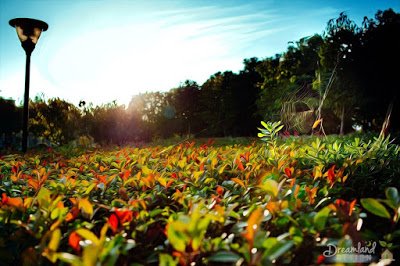Table of Contents Show
Whatever your garden dreams, help them come true by first getting a plan. After that, it’s quite easy to create a beautiful refuge, filled with the plants and flowers that you love and that will grow well in your climate conditions.
Want to plant all perennials? Want to attract butterflies and birds? Need to consider hot and dry conditions? Or perhaps you have more shade than the sun, or vice-versa.
This section is the place to get started, with even more information on all the pages you’ll find throughout this site. There’s plenty of advice to get you going.
 |
| Planning the Garden of Your Dreams |
First, find out your growing zone conditions at Growing Zones, a free informational Web site provided by the U.S. Dept. of Agriculture. Links from that site even suggest plants that would grow well in your region.
Also, consider the numerous pre-planned groupings available. These contain plant combinations that do well in shade, in full sun, in dry soil, next to foundations, etc. For example, see the pre-planned solutions sold by Springhill Nursery. And your local nursery may sell such groupings.
There’s also landscaping software if you’ve got a large area to work on. But a pencil and sheet of paper work just as well, especially for smaller areas.
Try Some of These Tips for Planning Your Garden
Create a General Garden Vision
Get out a sketchpad or graph paper and make as simple or as elaborate a picture as you like of your ideal. This allows you to experiment with colors and sizes without doing the work.
Would you like your front door framed by red blooms in the summer? If so, what kind of red flowers would work there? Check your books. Perhaps there’s an area you don’t want to replant each season. What perennials or shrubs would provide cover or color in that spot? Again, check your books.
Do you like that elm tree in that spot? Would you like a flaming red maple there, instead? How about a covered deck? A water garden with exotic Koi? An arched trellis covered with climbing roses or clematis?
Do you want to create a new flowerbed? Install a fountain or create a footpath? How about foundation lighting? Use this exercise to let your imagination go.
Create a 12-Month Budget
Just like any other household concern, you should make a budget for your garden. Decide how much each month you are able to spend; then determine what you need, what you want, and what is purely a luxury.
For example, you need to apply weeds and feed to the lawn; otherwise, the dandelions and crabgrass will take over everything. You need some bedding plants (if you’re not using an indoor greenhouse) and some mulch. The old oak tree has dead limbs that need removing.
A good, general fertilizer will be needed all spring and summer, along with basic pest controls. If you intend to seed, you need flower seeds. A leak-free hose and a watering can are required. A properly running lawn mower is a necessity.
Items such as these are basics and should top your budget list. But, how do you decide what you want, and what you need? Few of us can spend all that we’d like, so choices must be made, beginning with necessities.
You may want to invest in some perennials, such as hostas, bleeding hearts, lily-of-the-valley, hardy ferns, peonies, and roses. These are good investments, but they’re not necessities. If they don’t fit the budget, they can wait until next year; or pick a couple for this year, and leave the rest for next year.
You would like to have new patio furniture, a birdbath, a statue, a fountain, a trellis, a stone path, a water garden, walkway lights, a new grill, and some whirly gigs. These, obviously, would be wonderful to have, but they are not necessities. Put them in that category of the budget.
The budget works hand-in-hand with the 12-month outline and with the overall garden scheme. When you look ahead to the year, you know what you will need for any particular project, and you can determine what you will have to spend. Adding to that general plan, you’ll be able to see what long-range projects require investments now.
Voila! Your budget almost creates itself.
There are certain months April, May, and June in the spring, and September and October in the fall that will usually be more costly.
However, by following your budget, your monthly, and overall plans, you’ll be ready to handle unexpected costs, such as replacing the lawn mower, and know what you have remaining for plants, statuary, seeds, fertilizer, hoses, sprayers, etc. Here are some ideas for categories you could include in your budget:
- Mower
- Hoses, watering implements
- Hand tools
- Large tools
- Power tools
- Sprayers
- Materials for an Indoor Greenhouse and for Starting Seeds
- Nursery plants
- Trees and shrubs
- Fertilizers — for lawn, for garden
- Pest controls — for lawn, for garden
- Hired labor for tree-pruning, landscaping, lawn care, hauling
- Watering bills – how much to spend during the hot, summer months
Create a 12-Month Gardening Calendar
Get a current-year calendar. A calendar, loose-leaf binder … anything will do, as long as you have plenty of space to write. Use the calendar to create a month-by-month gardening schedule.
Decide how long each activity will take (an hour, a day, a weekend, two weekends), estimate the costs (materials, tools, labor), and decide when the time, money, and energy are likely to come together (single day off, after work hours, one weekend, vacation days).
For example:
- Do the trees need trimming? Will you do it? Do you have the tools necessary? Will you hire an arborist? If so, when can you schedule the work? Is it within your gardening budget?
- You want to have zinnias this year. Are they best started indoors, or planted in the ground? (A: in the ground). When is the best month? Is the soil prepared, or will you have to do that first? Do you have seeds on hand?
- The lawn needs reseeding or patching. When is the best time, and what does it require? What kind of seed will you use? Where will you get it? How much is needed for the area you want to overseed? What is required after you apply the seed? When will you schedule that work?
- When should you apply pre-emergent crabgrass and dandelion controls? How long will that take? Do you have a spreader, or do you need to buy or borrow one? What weather conditions are suitable? When should you fertilize the lawn? Apply white grub controls?
- You want to put in bedding plants. When is the best time to avoid damage from a late frost? Are the flowerbeds ready? Do they need to be cleaned and cultivated first? How long will that take? Do you know where your tools are? Do you have lawn and leaf bags on hand to discard garden refuse? Do you have new mulch to apply after the plantings?
Here’s a Brief Outline of Monthly Tasks
- January — Attend to indoor bulbs, plant additional indoor bulbs, start seeds, construct an indoor greenhouse, make a general gardening plan for the year, order seed/nursery catalogs, and remove heavy snow from trees and shrubs that could be damaged.
- February — Attend to indoor bulbs, order seeds/nursery stock, start more seeds and attend to seedlings in the indoor greenhouse, trim fruit trees, create a gardening budget
- March — Start clearing the yard for spring planting, start more seeds and continue attending to the indoor greenhouse, take stock of gardening tools and materials.
- April — Yard cleanup, weed-feed lawn, prepare flowerbeds, move seedlings outdoors to “harden-off” transplant plant early bloomers, feed iris, peonies, and other spring-blooming perennials.
- May — Transplant bedding plants after mid-month, continue preparing flowerbeds, continue yard cleanup, add new mulch, plant patio containers, check for garden/lawn pests, do appropriate pruning, do appropriate division/propagation of perennials, bring out the barbecue and lawn furniture repair or replace feed trees and shrubs.
- June — Water during hot periods, feed lawn and flowers, weed flowerbeds, deadhead flowering plants, apply slug bait, transplant more bedding plants, apply pest controls to lawn and flowerbeds, pinch back dahlias, mums and asters, start fall seeds in the indoor greenhouse (ornamental kale, asters, mums), set out houseplants.
- July — Water, feed annuals and perennials, apply pest controls, cut back leggy growth on annuals, pinch back dahlias, mums, and asters and feed them, and cut grass at the highest level.
- August — water, feed, and weed annuals and perennials, cut back old growth, start removing depleted annuals, feed dahlias, mums, and asters, apply pest controls, cut grass at the highest level
- September — Water, weed, pull up old annuals, trim back perennials, divide and transplant certain perennials (peonies, iris, etc), put in spring-blooming bulbs (narcissus, etc), and seeds, transplant fall bedding plants — kale, mums, asters, apply grass seed and/or fall fertilizer to lawn, keep mowing at the highest level, bring in patio containers to over-winter, bring in houseplants.
- October — Water, feed fall annuals and perennials, rake leaves, clean up summer debris, plant tulip bulbs, add mulch to perennial borders, set out bird feeder, dig and store tender bulbs (dahlia, gladiolus, etc), clean and store lawn furniture and garden tools, keep mowing if needed, apply new mulch, plant container bulbs for forcing indoors.
- November — Continue raking and yard cleanup, water perennials if needed, plant tulip bulbs, transplant trees, and shrubs, cover rose bushes, bind tree trunks, remove dead or damaged wood, remove dying fall annuals, disconnect hoses and turn off outdoor water supplies, apply soil amendments such as lime and gypsum, feed birds, bring container bulbs indoors.
- December — Keep ice-melt and salt away from lawns and gardens, remove heavy snow from trees and shrubs in danger of damage, remove heavily matted leaves and debris from against foundation or on perennial gardens, feed birds, attend to container bulbs and houseplants, check indoor greenhouse for repairs/bulb replacement.
These and many more things can be done each month. It can seem daunting, but if organized and spread out over 12 months and 52 weeks, these gardening chores and activities become both manageable and enjoyable.
Keep a Gardening Journal
Along with a 12-month calendar, a journal is a great tool for the home gardener. A journal will help you remember from year to year the things you tried, what worked, what didn’t, and what you want to try at a later date.
You don’t have to reinvent the wheel each season and rack your brain trying to remember what you did the year before. A journal also helps you recall where you planted spring bulbs last fall and where your perennials are so that you don’t over-plant them later or accidentally dig them up
Your Journal Could Include
- Types of seeds or nursery stock you planted, where they came from, whether they were good quality, any problems you had with the supplier or the stock, plus the planting dates, germination, and quality of the seeds you start in your indoor greenhouse.
- Work you did last year and the results.
- Questions, problems you need to ask an expert about.
- General observations about your garden birds, bugs, sun, shade, heat, cold, drought, and rain.










